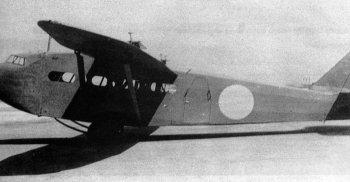![]() The Pacific War Online Encyclopedia
The Pacific War Online Encyclopedia
|
| Previous: Glenn L. Martin Company | Table of Contents | Next: Glover, Robert O. |

U.S. Air Force. Via Wikipedia Commons
Gliders are unpowered aircraft that are
towed to their operating area by a large powered aircraft such as a transport. They are used
to land men and equipment in support of an airborne attack. They are
particularly valuable for their ability to bring in small artillery guns or very light tanks, which add considerably to the
firepower of the paratroops.
The U.S. Army first began experimentation with gliders in July 1941 at Wright Field, but by then the Germans had already employed glider forces in combat in Belgium and Greece.
The first U.S. glider battalion was organized in May 1942, and the
glider force numbered 13,000 gliders and over 10,000 pilots by the end
of the war. The U.S. Marines experimented with gliders,
but found them unsuitable for Pacific operations, and the Marine glider
force nubered just 21 gliders and 282 troops when it was disbanded.
Allied
use of gliders was largely restricted to the Burma theater, where they were used to insert deep raiding forces, such as the Chindits, or to resupply isolated conventional
ground units. The first use of gliders
by the Allies in the Pacific was by 511
Parachute Regiment at Aparri on
23 June 1945, but 6 Army
troops had already seized the town by the time the airborne troops
arrived.
The Japanese
used a few obsolete transports
in the glider
role during the Centrifugal
Offensive, but did not develop a true glider in time to
see use in combat. However, the Ku-8
"Gander" saw service resupplying isolated conventional ground
forces in the Philippines.
References
The Pacific War Online Encyclopedia © 2008, 2010-2012 by Kent G. Budge. Index